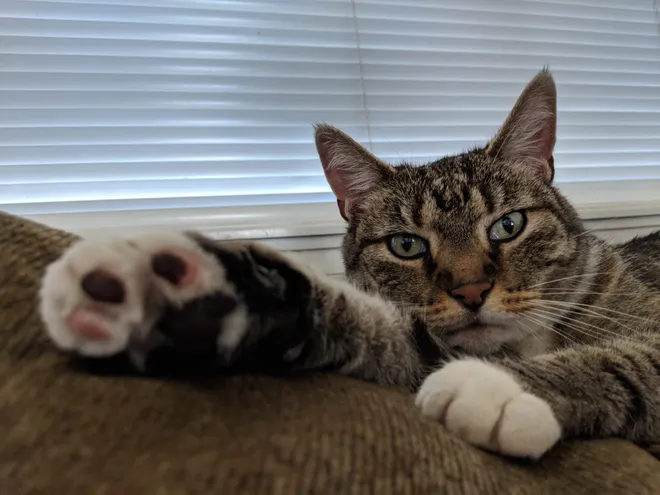In recent months, a worrying trend has emerged in Colorado as domestic cats are increasingly falling victim to the bird flu virus, raising concerns among pet owners across the state. The avian influenza, commonly associated with birds, has made a surprising and deadly leap into the feline population, leaving many cat owners wondering if their beloved pets are at risk.

The Bird Flu Outbreak: What You Need to Know
Bird flu, scientifically known as avian influenza, is a viral infection that primarily affects birds. However, in rare cases, the virus can cross species barriers, infecting mammals such as cats. The strain responsible for the recent cat fatalities in Colorado is H5N1, a highly pathogenic variant of the virus that has caused significant mortality in wild bird populations and, more recently, in domestic cats.
While bird flu has been a persistent threat to poultry and wild birds, its spread to domestic cats is a relatively new phenomenon. The Colorado Department of Public Health and Environment (CDPHE) has reported an increase in cases where cats have contracted the virus after coming into contact with infected birds or contaminated environments. This has led to a surge in fatalities among the feline population, sparking fear and uncertainty among cat owners.
How Does Bird Flu Spread to Cats?
The transmission of bird flu to domestic cats typically occurs when a cat preys on or scavenges an infected bird. Cats can also contract the virus by coming into contact with surfaces contaminated with the droppings, saliva, or respiratory secretions of infected birds. In some cases, the virus may be present in the environment, such as in areas where infected birds have roosted or nested.
Once a cat is infected, the virus can spread rapidly through its body, causing severe respiratory and neurological symptoms. Unfortunately, there is no specific treatment for bird flu in cats, and the mortality rate is high, particularly with the H5N1 strain. Symptoms in cats can include coughing, sneezing, difficulty breathing, lethargy, and sudden death.
Are All Cats at Risk?
While the recent cases in Colorado are alarming, it’s important to note that not all cats are equally at risk. Outdoor cats, especially those with access to areas where wild birds congregate, are at the highest risk of contracting bird flu. Cats that hunt or scavenge for food are also more susceptible, as they are more likely to come into direct contact with infected birds.
Indoor cats, on the other hand, are generally at lower risk, especially if they do not have access to the outdoors or are not exposed to potentially contaminated environments. However, pet owners should remain vigilant and take preventive measures to protect their cats, regardless of whether they are indoor or outdoor pets.
How to Protect Your Cat from Bird Flu
Given the severity of bird flu and its impact on domestic cats, it’s crucial for pet owners to take steps to minimize their cat’s risk of exposure. Here are some practical tips to help protect your cat from bird flu:
- Keep Cats Indoors: The best way to prevent your cat from contracting bird flu is to keep them indoors, where they are less likely to come into contact with infected birds or contaminated environments. If your cat enjoys spending time outdoors, consider creating a secure, enclosed outdoor space where they can safely explore without the risk of exposure.
- Monitor Outdoor Cats Closely: If keeping your cat indoors is not feasible, closely monitor their outdoor activities. Avoid allowing your cat to roam freely in areas where wild birds are known to gather, such as parks, lakes, and wooded areas.
- Remove Food Sources: Avoid feeding birds in your yard, as this can attract wild birds and increase the risk of your cat coming into contact with infected birds. Additionally, remove any bird carcasses or droppings from your property promptly to minimize the risk of contamination.
- Practice Good Hygiene: Wash your hands thoroughly after handling your cat, especially if they spend time outdoors. This helps prevent the spread of the virus to other pets or household members.
- Consult Your Veterinarian: If your cat shows any signs of illness, such as coughing, sneezing, or lethargy, contact your veterinarian immediately. Early detection and supportive care can improve your cat’s chances of recovery, although there is no specific treatment for bird flu in cats.
The Broader Implications of Bird Flu in Cats
The spread of bird flu to domestic cats in Colorado has raised broader concerns about the potential for the virus to mutate and affect other species, including humans. While there is currently no evidence to suggest that bird flu can be transmitted from cats to humans, the possibility of zoonotic transmission cannot be entirely ruled out.
Public health experts are closely monitoring the situation and advising cat owners to take preventive measures to protect their pets and minimize the risk of further spread. The CDPHE is also working to increase awareness among veterinarians and pet owners about the signs of bird flu in cats and the importance of early detection and reporting.
Is Your Cat at Risk?
The recent bird flu outbreak in Colorado has highlighted the importance of vigilance and preventive care for pet owners. While the risk to indoor cats remains low, outdoor cats are at a higher risk of contracting the virus, especially in areas where wild birds are prevalent. By taking proactive steps to protect your cat, you can help reduce their risk of exposure and keep them safe from this deadly virus.
As this situation continues to evolve, staying informed is key. For more updates on bird flu and other health-related topics, visit our Digital Digest Health section, where you’ll find the latest news and expert advice to keep you and your pets healthy.




